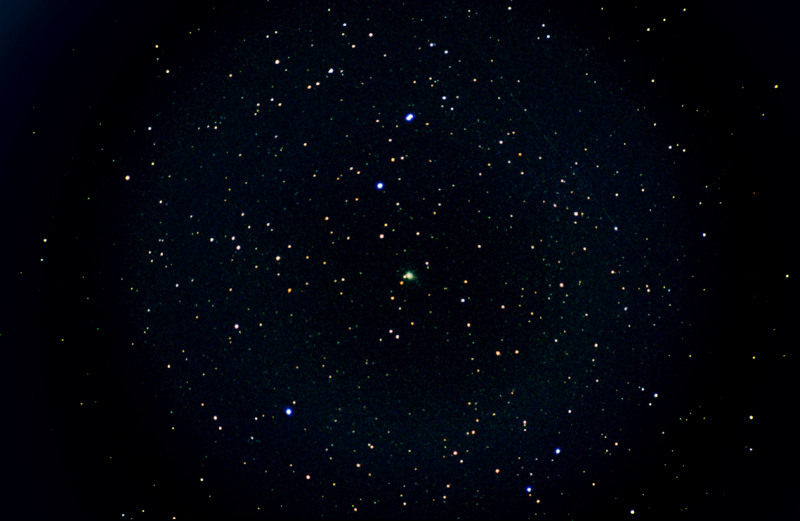
February 27, 1987
15 minutes exposure, Fujichrome 1600 slide film.
5" f/5 refractor at prime focus.
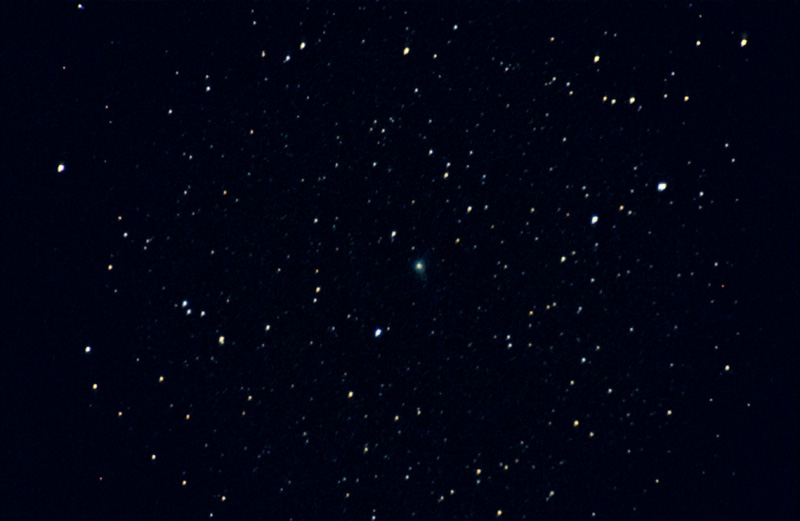
March 1, 1987
15 minutes exposure, Fujichrome 1600 slide film.
5" f/5 refractor at prime focus.
Although 1986 was dominated by comet Halley, there was still considerable other comet activity. At one stage there were over a dozen comets visible in a medium sized telescope. One of the best of these comets was comet Wilson, 1986l. Comet Wilson was discovered in early August as a 12th magnitude object. When its orbit was calculated, it was found that the comet would reach 4th magnitude during April/May of 1987, when it would be deep in the southern sky.
By the end of February of 1987, the comet was visible to the naked eye as a faint 5th magnitude object. In the telescope it displayed a bright, well condensed coma with two short, faint tails about 70 degrees apart.


March 1, 1987
15 minutes exposure, Fujichrome 1600 slide film.
5" f/5 refractor at prime focus.
During March the comet continued to brighten slowly, becoming more easily visible to the naked eye. Eventually the comet peaked at around magnitude 4.6. The tail was never very prominent even in the telescope, and the second tail was visible only on photographs.
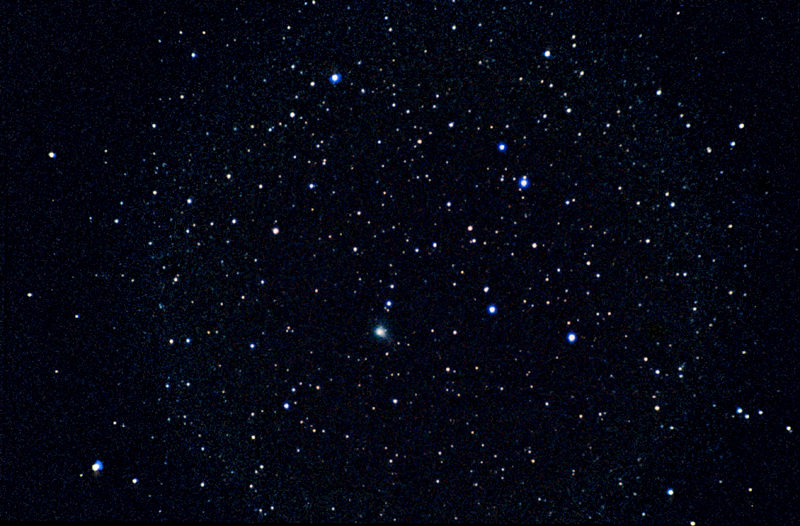
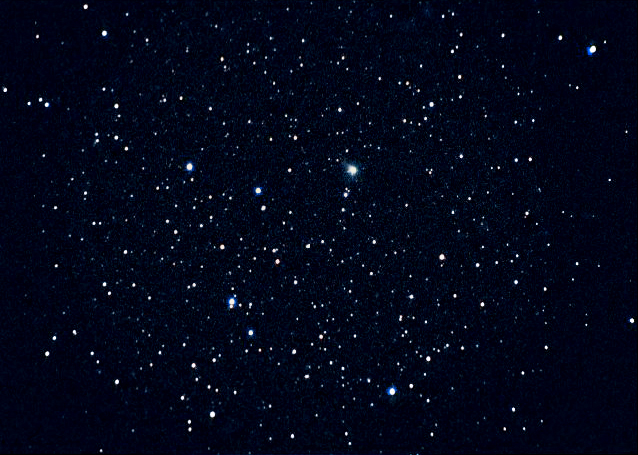
March 9, 1987
15 minutes exposure, Fujichrome 1600 slide film.
5" f/5 refractor at prime focus.
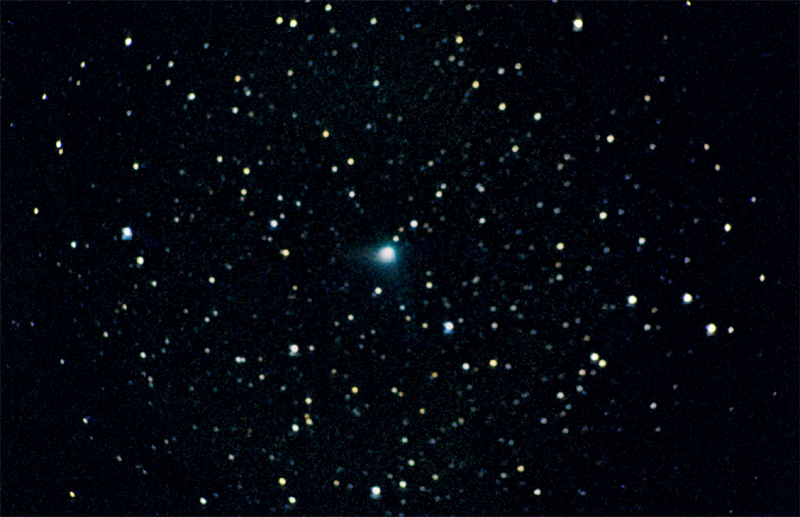
March 30, 1987
21 minutes exposure, Fujichrome 1600 slide film.
5" f/5 refractor at prime focus.
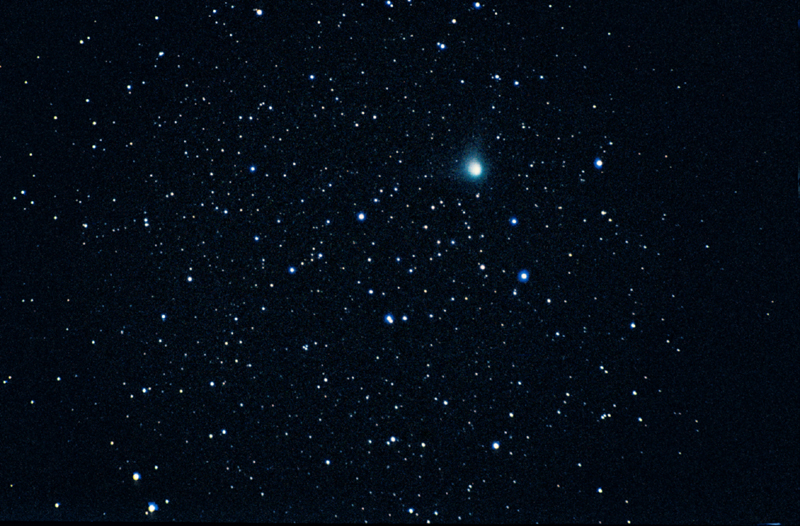
April 2, 1987
22 minutes exposure, Fujichrome 1600 slide film.
5" f/5 refractor at prime focus.
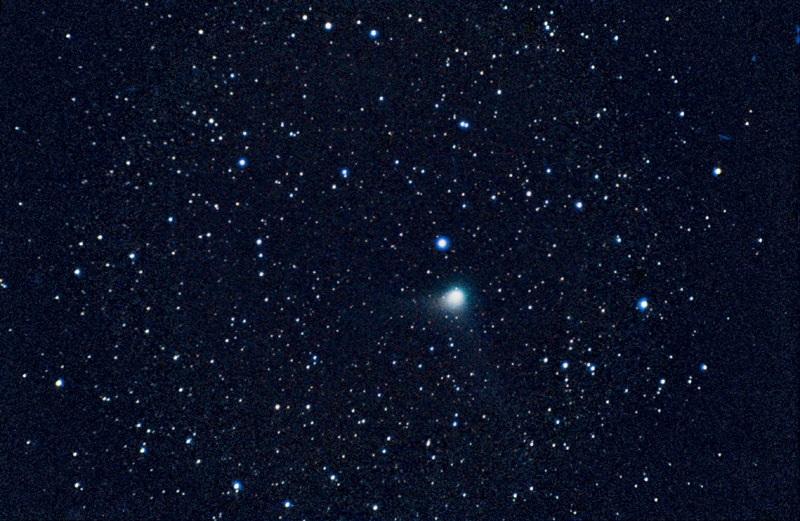
April 5, 1987
20 minutes exposure, Fujichrome 1600 slide film.
5" f/5 refractor at prime focus.

April 12, 1987
20 minutes exposure, Fujichrome 400 slide film.
6" f/3.6 schmidt-newtonian at prime focus.
As the comet passed perihelion it began to fade, however before it disappeared to the naked eye, it had an interesting conjunction with a very rare object, a naked eye supernova!
At the end of February, a naked eye supernova in the Large Magellanic Cloud, SN1987A , burst onto the astronomical scene. On May 4 and 5, comet Wilson passed only a couple of degrees from the LMC and the supernova. Here was an opportunity to observe a very unique conjunction. A naked eye comet passing a naked eye galaxy containing a naked eye nebula and a naked eye supernova. It was a beautiful sight. Unfortunately, the only opportunity I had to photograph this conjunction was spoiled by cloud. Below is one photograph I obtained through the cloud.
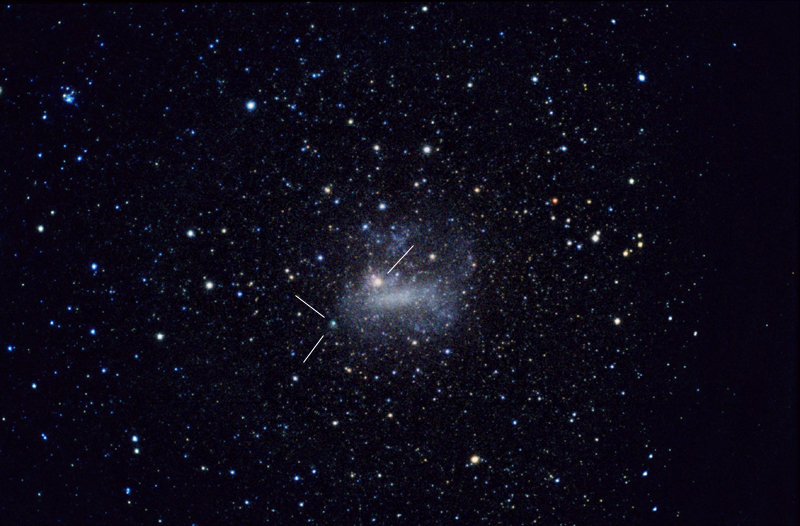
After this, the comet continued to fade slowly. By the beginning of June the comet was still a nice object in the telescope with a short double tail.
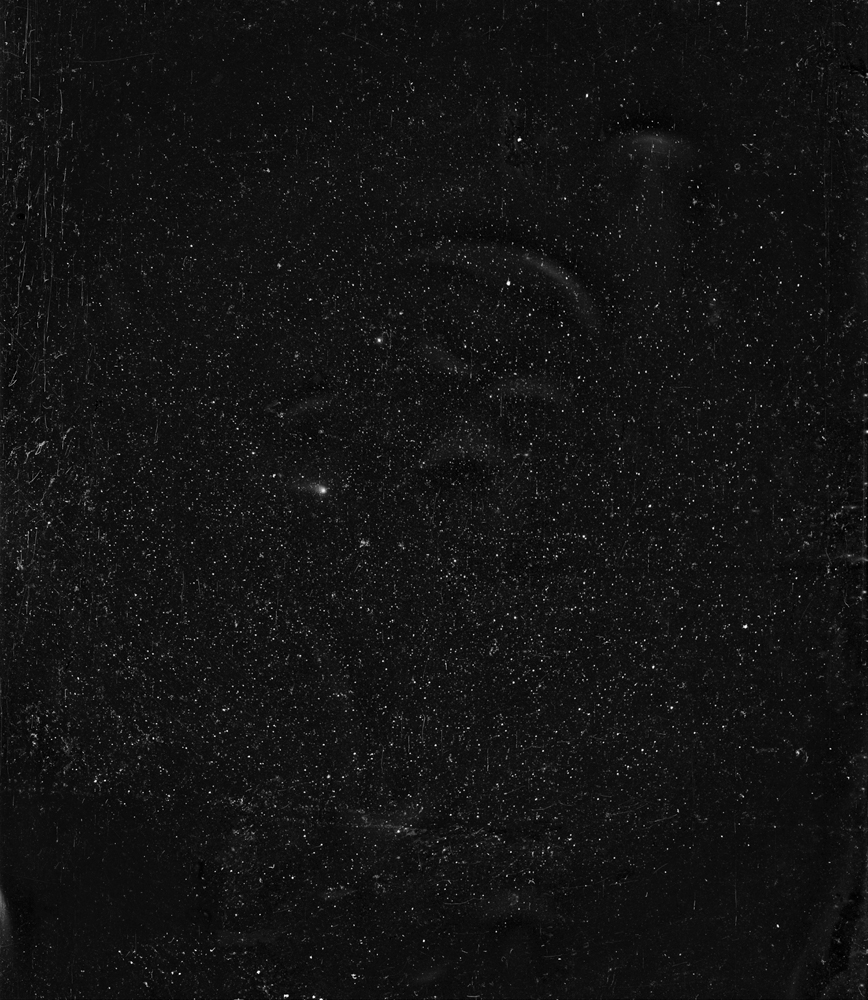
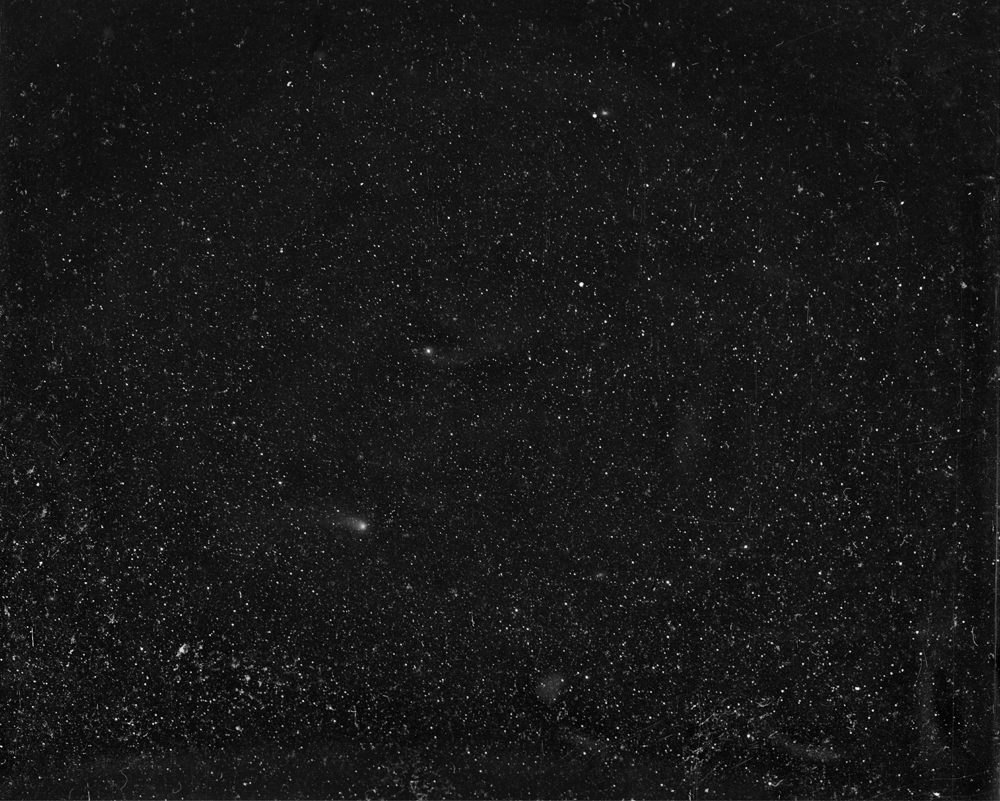
June 1, 1987
15 minutes exposure, hypered Kodak 6415 film.
6" f/3.6 schmidt-newtonian at prime focus.
My final observation was on December 16, 1987, when the comet appeared as a small, diffuse object of magnitude 11.8.